How to grow Catalpa
Also known as Indian bean tree, catalpa is a deciduous tree with a wide, spreading habit which originates from North America and East Asia. It is grown for its distinctive large, heart-shaped foliage, horse chestnut-like flowers, and long, bean-like seedpods.
There are around eleven species, though the most popularly cultivated in the UK is Catalpa bignoniodes, of which notable cultivars include ‘Aurea’ with bright yellow foliage (bronze at first), and ‘Nana’ – a compact, shrubby form which rarely flowers. You may also come across the hybrid C. x erubescens ‘Purpurea’ – its leaves a dark, blackish purple when young, maturing to dark green.
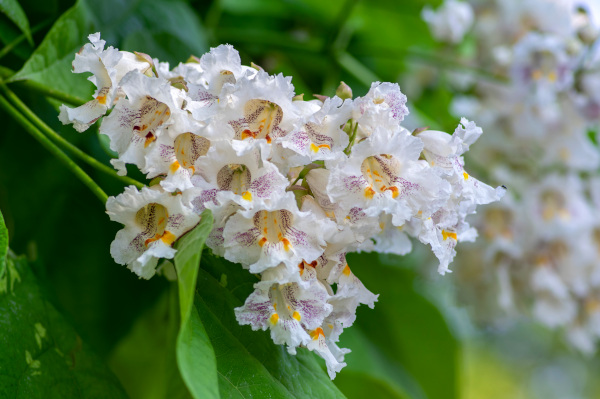
Key Information
Position
Soil Conditions
Hardiness


Where & when to plant Catalpa
Container-grown deciduous trees can be planted at any time of year, though are easier to care for when planted in autumn or winter simply because they require less watering.
The caveat to this is if you live in an area prone to extremely cold or wet winters you’re best waiting until early spring.
Left to grow freely, catalpa has a wide, dome-like form and is best as a specimen tree, perhaps in the middle of a lawn. An alternative approach is to pollard or coppice it annually (see ‘Pruning and Deadheading’ section below), to restrict its size and enable you to incorporate it into a border. This has the added benefit of increasing its ornamental value, as young growth produces larger, more impressive leaves than mature wood.
One thing to note about catalpa is that it does produce a fair quantity of ‘litter’, i.e., the big leaves, chunky flowers, and long seed pods which all fall to the ground underneath at varying times of the year. In a lawn this means you’ll need to tidy beneath it on a regular basis. It does also make it less suitable for growing as a street tree or anywhere overhanging a pavement or other shared space.
Like most trees, catalpa can be grown in a container for a few years, though is likely to struggle long term. Go for a dwarf form such as ’Nana’ if you wish to take this approach.
How to plant Catalpa
- For planting into the ground, start by watering the roots well and allow to drain before planting.
- If you are planting into grass, remove a circle of grass at least 1m in diameter.
- Dig the soil area over, removing any large stones and weeds and breaking up any lumps. Mix in a generous amount of organic matter such as manure or garden compost.
- Rake level and firm with your heels. Rake level again.
- Now dig the planting hole, aiming for twice the width of the rootball.
- Place the plant in the hole, ensuring the top of the rootball sits level with the surface of the soil. Too low and the stem can rot, too high and the roots can dry out. Some cultivars are grafted onto the rootstock of another species, so look out for the graft union and take care not to bury this.
- Backfill with soil and firm in gently with your foot.
- Soak well with water.
- Mulch around the base with well-rotted organic matter such as manure or garden compost.
- For planting in containers (remember, dwarf varieties are best for this), first choose an appropriately sized pot. The best practice is to start just a few centimetres larger than the root ball and go up in size gradually every year or so. Always ensure there are plenty of drainage holes in the bottom.
- Again, water the roots thoroughly and allow to drain before potting.
- It can be a good idea to fill and plant your pot in situ to save yourself the trouble of moving it once full.
- Use a good quality potting compost with plenty of horticultural grit mixed in, and, if not already present in the compost (check the description on the bag) some slow-release fertiliser granules.
- Start by partially filling the pot with compost; enough so that when placed on it the top of the roots sit about 3cm lower than the top of the pot.
- Infill all the space surrounding the roots with compost, firming down with your fingers then adding a little more so the plant is held tight. Again, remember to ensure the graft union sits just above the surface of the compost.
- Pick up the pot (if you can!) and lightly tap on the potting bench or ground a few times to help further settle the compost around the plant.
- Soak well with water.
- A mulch with horticultural grit will look attractive and help to prevent a ‘cap’ or crust forming on the top of the compost (something container plants can suffer due to the artificial nature of their watering).
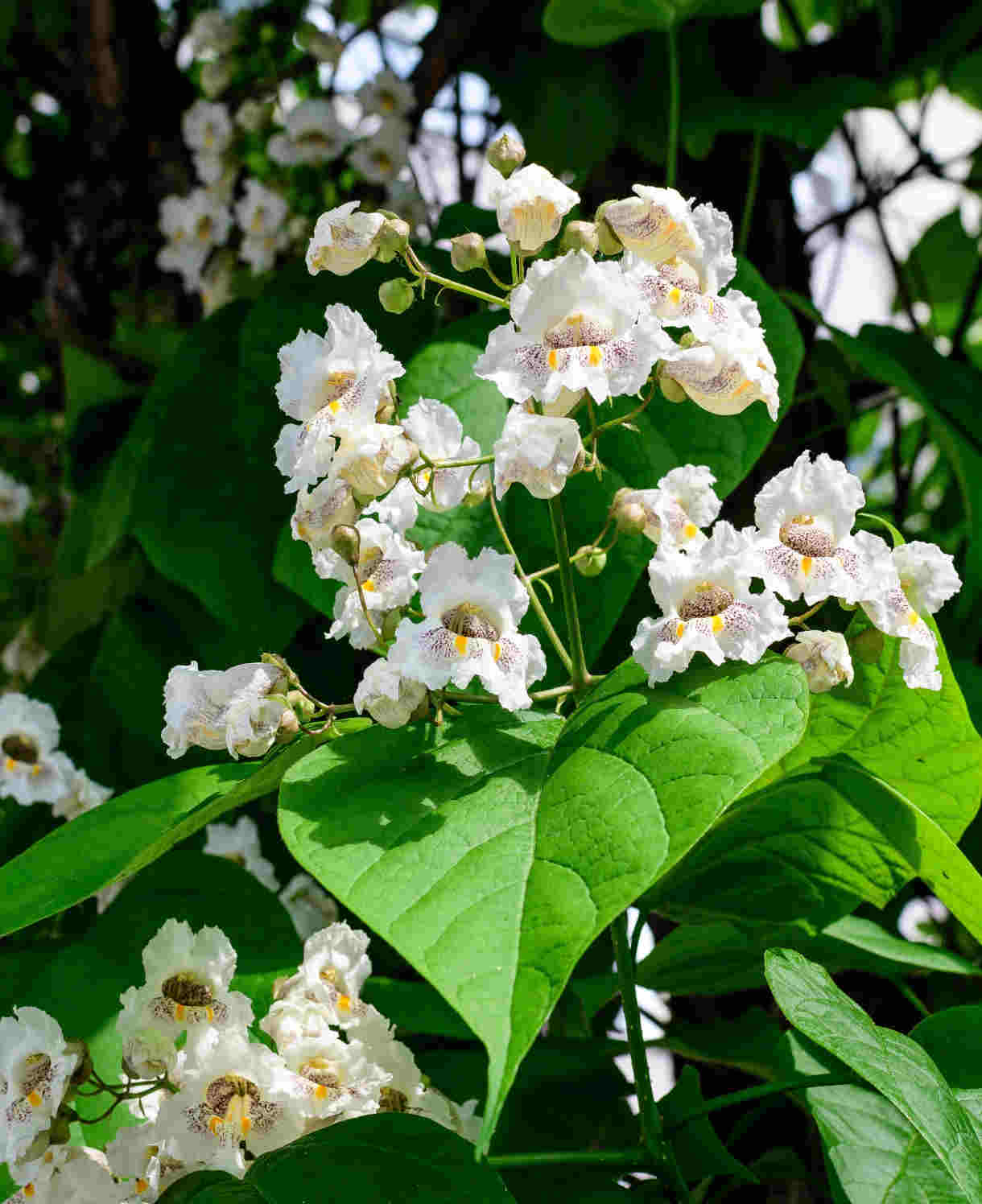
What to plant with Catalpa
Catalpa fits easily into a range of garden styles, whether as a statement, specimen tree or a pruned, giant-leaved curiosity in a border. We love contrasting the yellow-leaved ‘Aurea’ cultivar with blue and purple toned herbaceous planting – think allium, nepeta, lavender, eryngium, and agapanthus. The purple-leaved ‘Purpurea’ is perfect for a hot colour scheme, acting as a dark, dramatic foil to the bright reds, oranges, and yellows of plants such as dahlia, canna, kniphofia, alstroemeria, and sunflower.
For planting into a lawn, we always recommend deciduous trees be underplanted with a mix of spring-flowering bulbs – it’s just too good an opportunity to miss for some twinkling, early colour! Anemone blanda, cyclamen, chionodoxa, and galanthus should all do well there and naturalise gently over the years. Just resist the urge to mow their spent foliage away until it has fully died back.
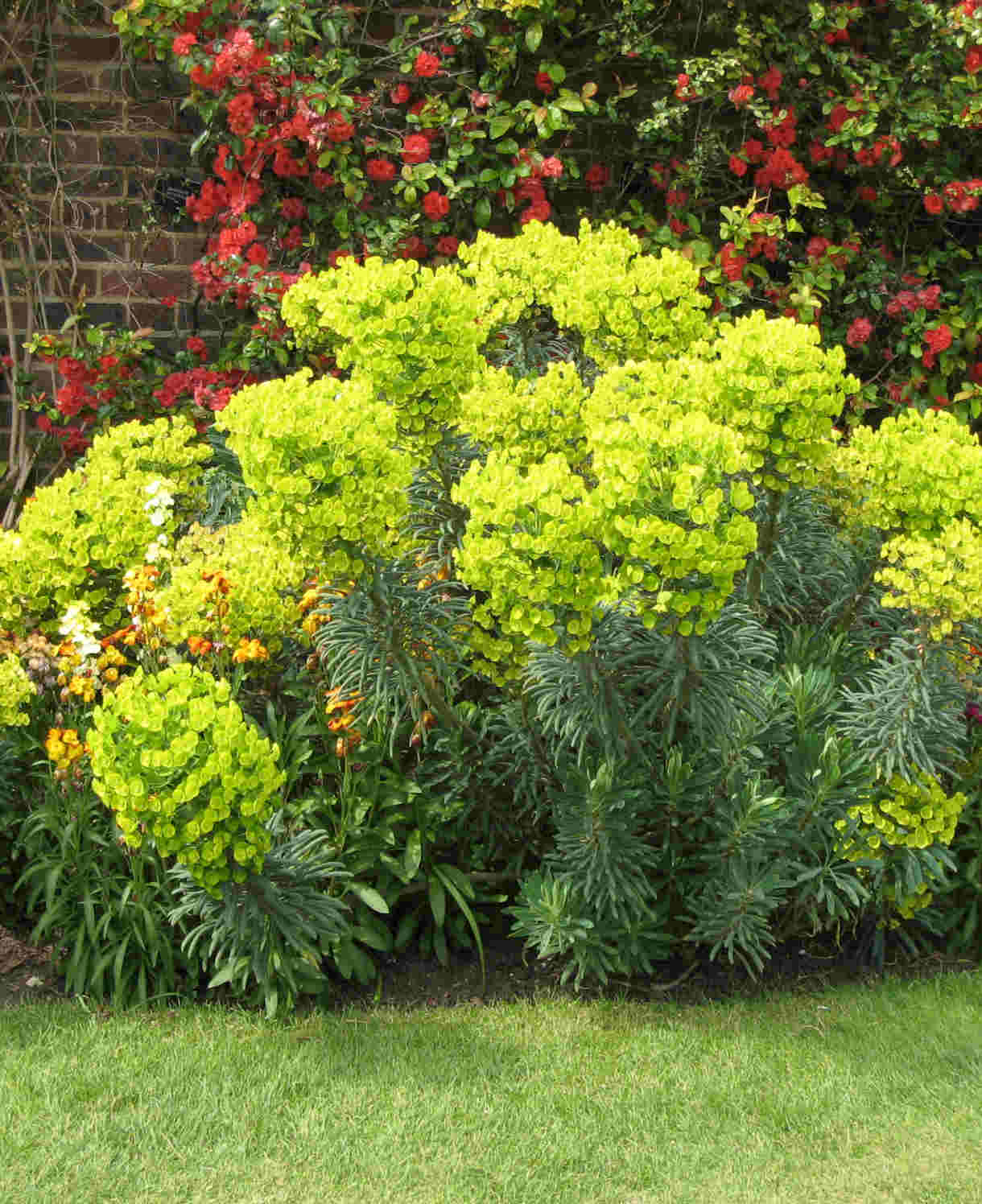
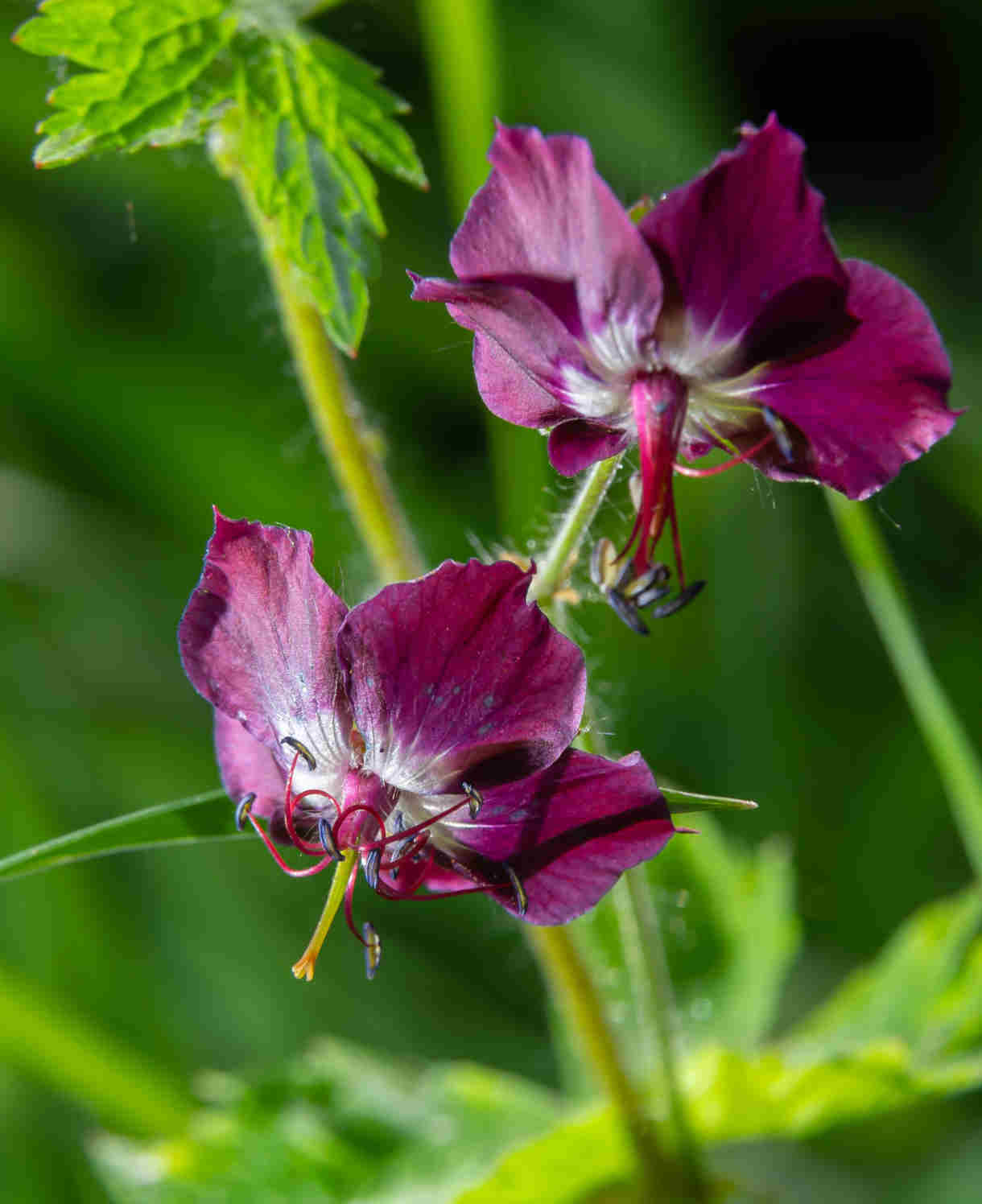
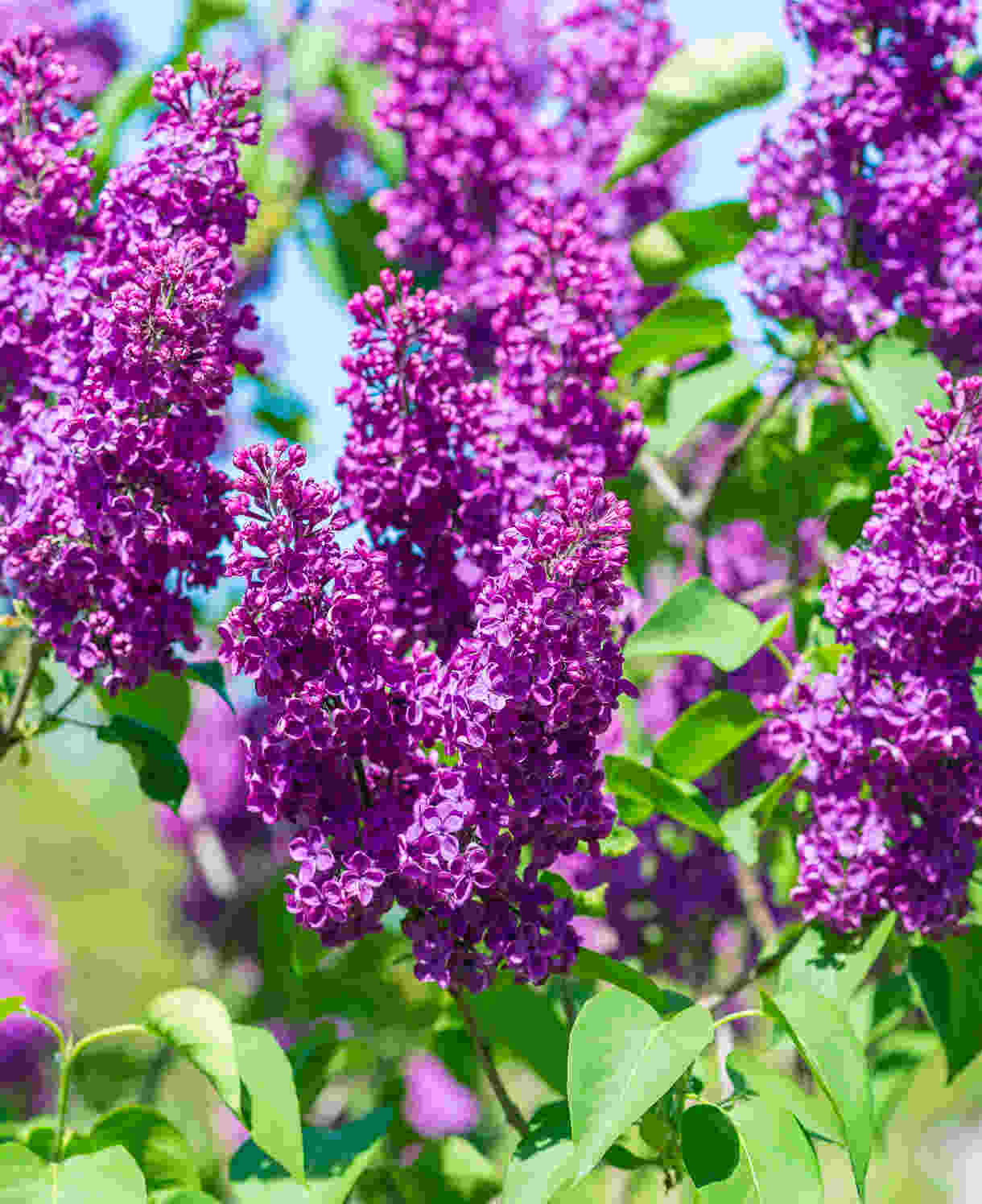
How to care for Catalpa
Pruning and Deadheading
Catalpa falls into the RHS pruning group 1, which means when left to grow freely as a specimen tree, no pruning is required other than the occasional removing of dead, diseased, damaged, or badly placed growth. This is best done in spring.
An alternative approach is to prune catalpa hard in late winter or early spring (RHS pruning group 7), to dramatically restrict its size and generate the extra-large, decorative foliage. Treated this way, catalpa can be incorporated into a border or smaller space. Pollarding (cutting back to the same height each year – think those avenues of knuckled lime or plane trees), or coppicing (cutting down to just above ground level each year), both work well.
Watering
Like all trees, catalpa should be regularly watered during its first few growing seasons in the ground, after which it should be largely self-sufficient other than in prolonged periods of hot, dry weather. Catalpa grown in free-draining soil will need more attention when it comes to watering, and benefit from an extra mulch or two throughout the year to help lock in the moisture (see ‘Feeding’ section below).
Container-grown catalpa has less access to moisture so needs to be regularly watered throughout every growing season. Allowing the top couple of centimetres of compost to dry out between watering is a useful rule of thumb to help avoid overwatering. Use your finger inserted into the compost to check. From mid-autumn, the British climate tends to take over watering needs, though do remember to step in in the event of an unseasonably dry spell.
Feeding
To give it the best possible start, feed catalpa for its first few years in the ground with a general purpose granular feed applied to the surface of the soil and lightly worked in (known as a ‘top dress’). This is best done in late winter, along with a mulch of well-rotted organic matter (i.e., a layer of manure or garden compost applied to the soil around the plant). This has the added benefit of suppressing weeds and locking in moisture.
Once your catalpa is well established an annual mulch should provide sufficient nutrients, however apply a top dress as above if ever you feel an extra boost is needed.
Container-grown plants rely even more on the gardener for nutrition. Get off to a flying start by making sure you use a good quality compost, then throughout the growing season (March to September) apply a liquid feed at regular intervals according to instructions. An annual top dress is also advisable: each spring, scrape off the top 5cm of compost and replace with fresh compost containing a little general purpose granular feed.
Cold Protection
Catalpa is fully hardy, and once mature can withstand even a harsh UK winter without the need for additional protection.
Young, unripened wood, however, can be susceptible to frost damage. This means it is advisable to protect newly planted trees from hard frosts, using one of these handy fleece jackets, or simply a bedsheet or similar.
Pests and Diseases
Catalpa is considered trouble-free.
How to propagate Catalpa
Take softwood cuttings in late spring or summer, using the soft, pliable tips of new, non-flowering growth.
- Snip cuttings off the plant, if possible taking a longer piece than the ideal eventual length of around 10cm (to allow for trimming).
- Put them in a plastic bag straight away to prevent drying out.
- Fill several pots with a perlite-heavy compost mix (at least 50% perlite).
- Trim the end of the cutting to just below a node (point at which leaves grow).
- Remove lowest leaves and soft tip, leaving 2-4 leaves.
- If the remaining leaves are large, cut them in half with a sharp knife (to reduce water lost through transpiration).
- Insert the cuttings into the compost and water lightly. Several cuttings can be put in the same container if there is enough space to do this without them touching.
- Place in a greenhouse or propagating unit if you have one or covered with a plastic bag on a windowsill if not (out of direct sunlight).
- Keep the cuttings misted and occasionally watered until they root. You will know this has happened when roots emerge out of the bottom of the container.
- Gently remove rooted cuttings and pot them into individual pots. Grow on in a cool yet frost-free environment such as an unheated conservatory, greenhouse, or cold frame, until they are large enough to be planted out.
* Many plants carry Plant Breeders Rights and cannot be propagated for commercial purposes.
Common Catalpa questions
- Are catalpa trees easy to grow?
These trees are known for their adaptability, fast growth rate, and low maintenance requirements. - Are catalpa trees hardy?
They are. All cultivated species are rated H6, meaning they can withstand temperatures of -15°C and -20°C. Having said this, the young, unripened wood can be more tender, so protect newly planted specimens as in our ‘Cold Protection’ section above. - Can you keep a catalpa tree small?
Absolutely, and this how many gardeners are able to grow this naturally large tree in their gardens. Pruning hard annually, using either a pollarding or coppicing technique (see ‘Pruning and Deadheading’ section above), will restrict catalpa to a compact size and also generate super-sized foliage. - Can you eat the beans from a catalpa tree?
Yes – the large, flat seeds are a traditional food of Native Americans, and can be cooked in things like soups, stews, and curries. - The branches of my catalpa are becoming brittle and dry in autumn. What’s the problem?
This is probably a sign your catalpa is coming to the end of its life, which tends to happen when they reach around 60 years old. - How fast does catalpa grow?
This tree has a medium to fast growth rate and can be expected to grow between 30cm and 60cm per year. It usually takes 5-7 years to reach maturity i.e., produce flowers and seedpods. - Is catalpa invasive?
No, though it can self-seed freely in favourable conditions. Simply weed out seedlings/ saplings where not wanted.




